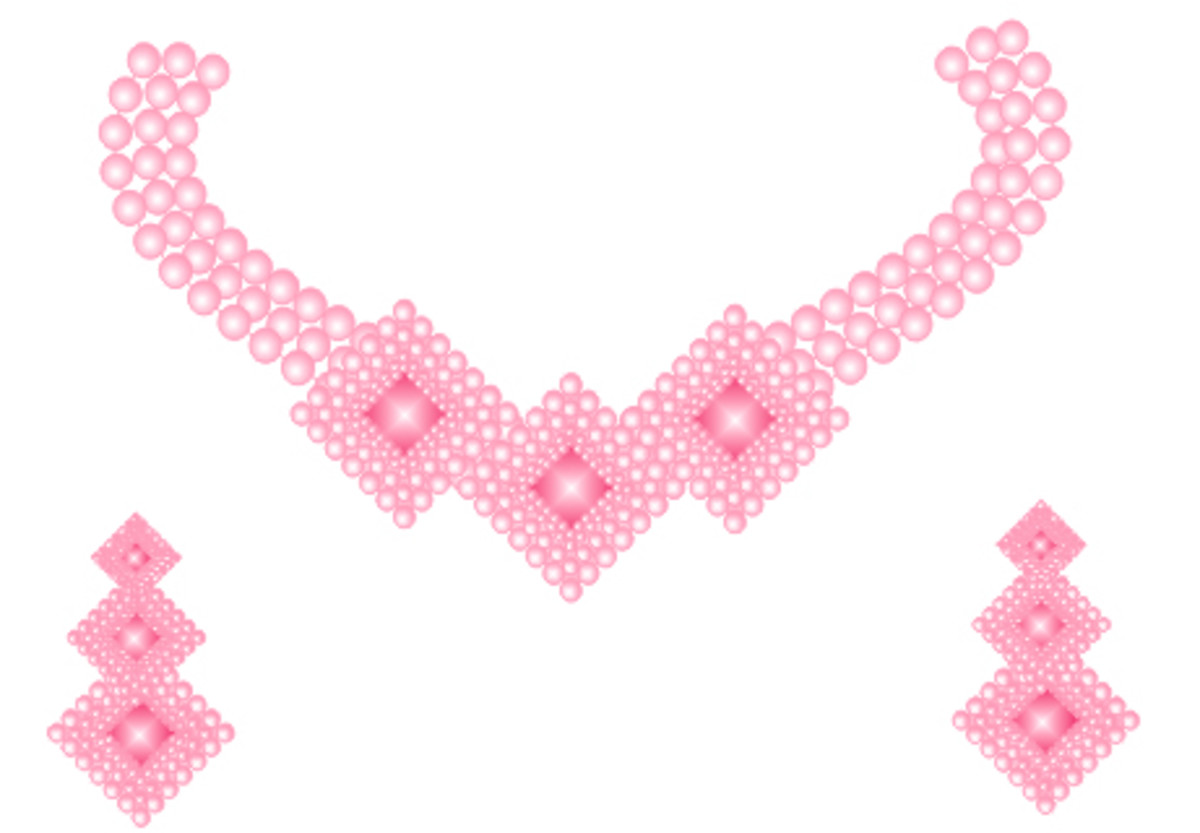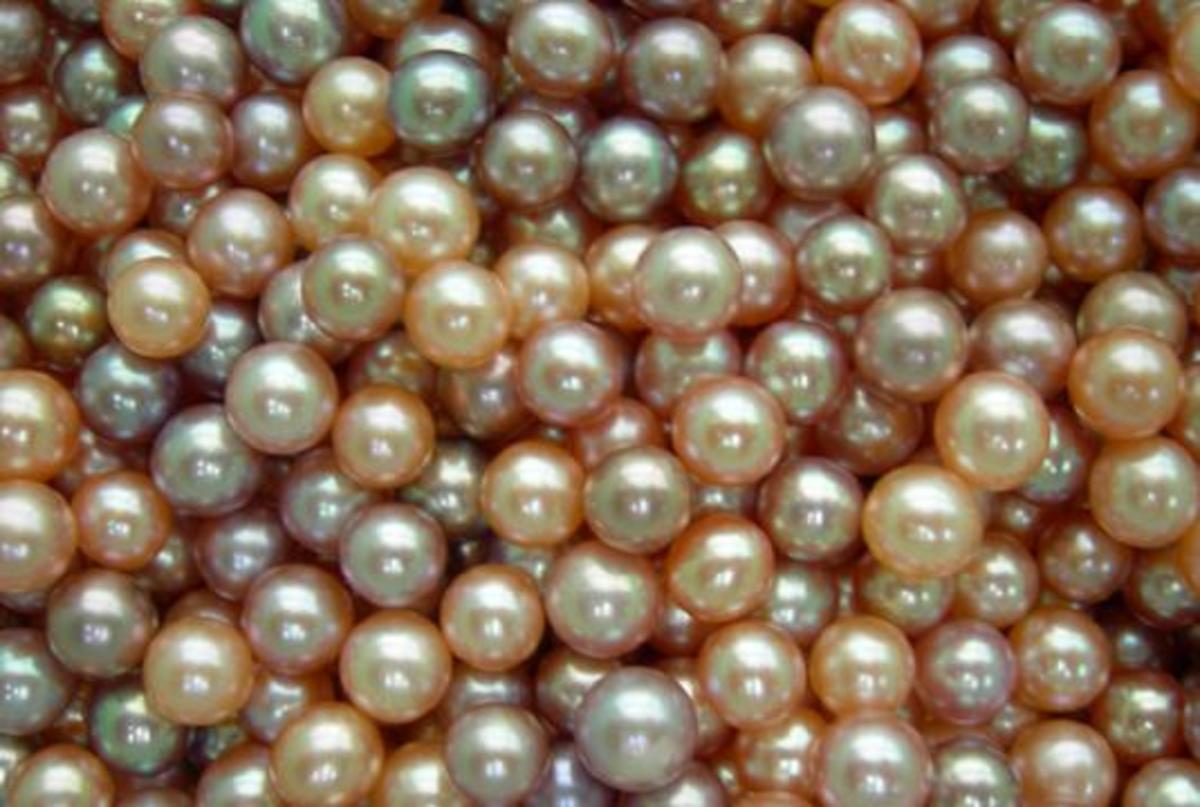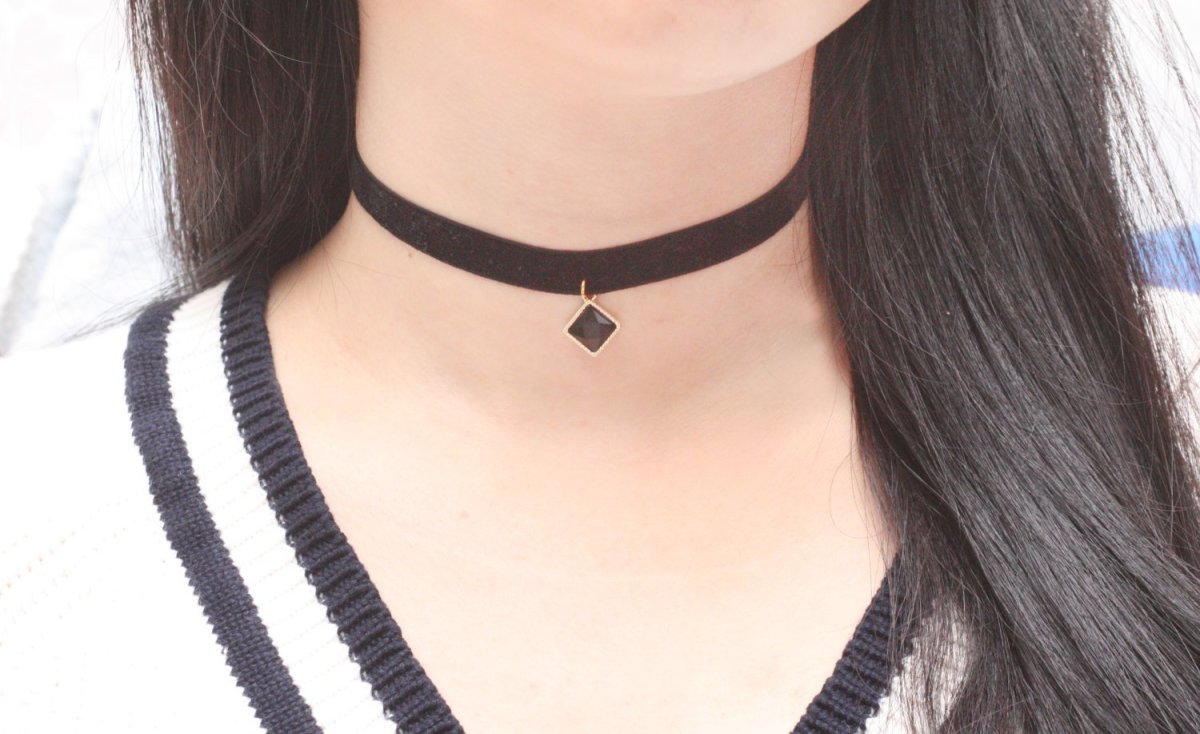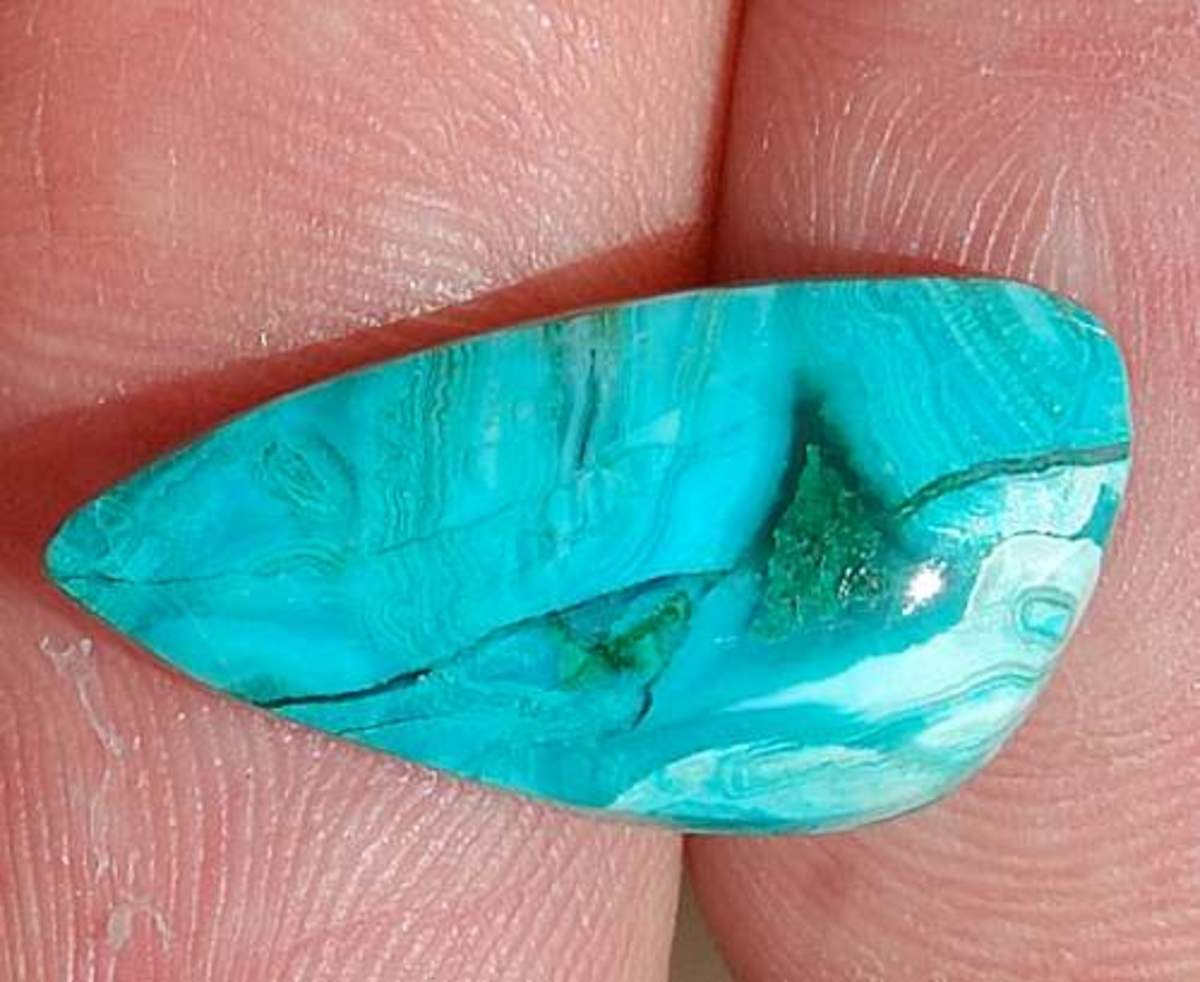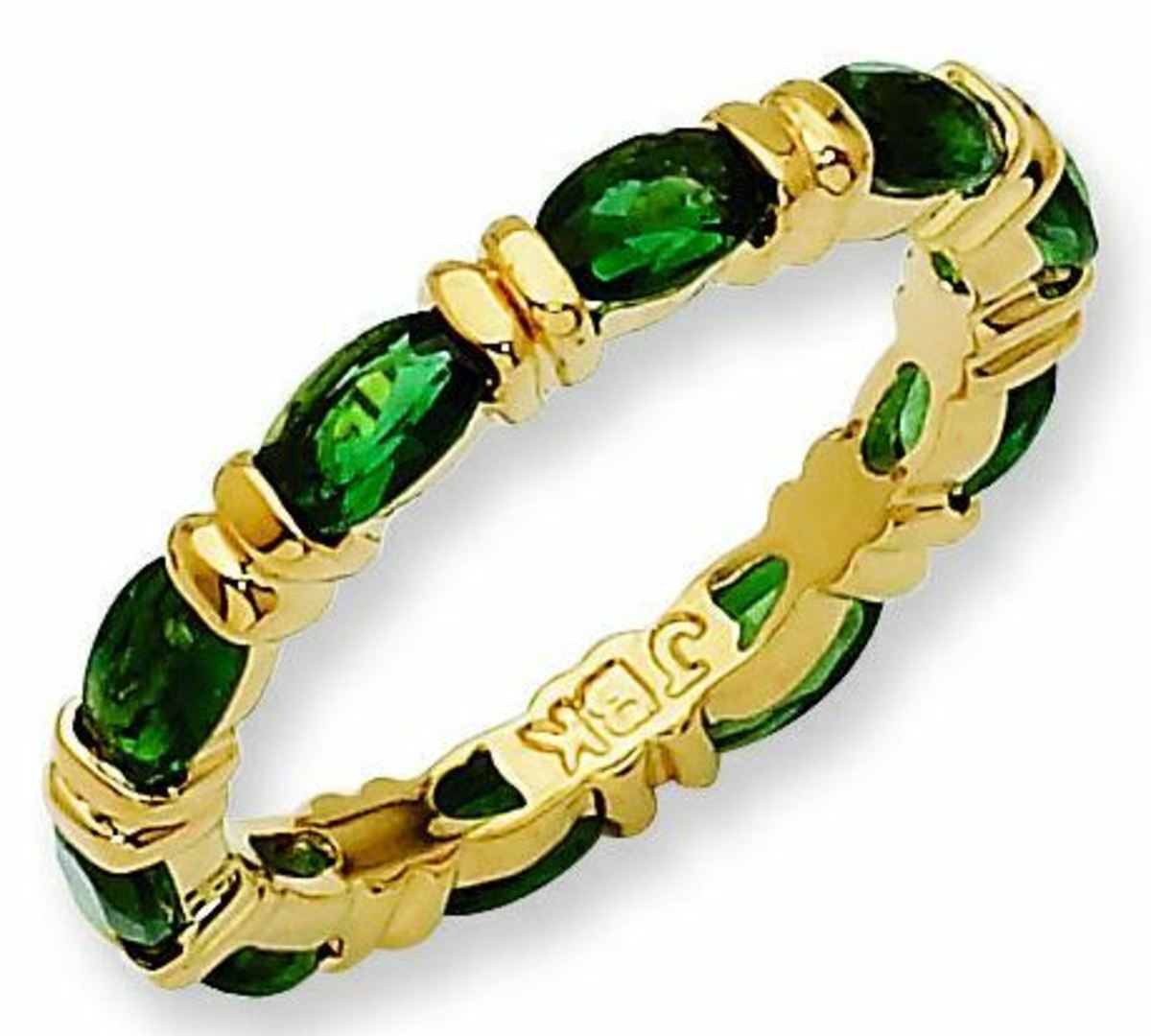Caring for, Protecting and Cleaning Pearl Jewellery
Introduction to looking after pearl jewellery
Pearls are beautiful, and in many ways durable. Wearing a wonderful pearl necklace isn't as risky as wearing large, delicate glass bubbles.
But pearls do need some care and attention, and they are softer and more prone to damage than, say, platinum, diamonds, or sapphires.
This article tells you how to look after pearls, what might damage your pearls, and how to protect them from physical and chemical harm.
This article also tells you how to clean pearls themselves, and also the precious metal clasps and other settings often found on pearl necklaces, bracelets, earrings, or rings.
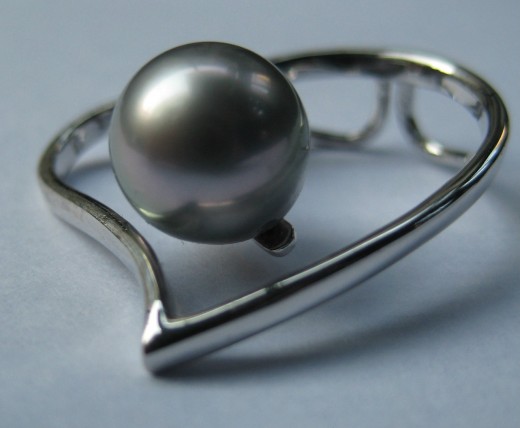
Physical Damage and the Risk to Pearls
Stones, gems, rocks and other similar items, such as pearls, are rated on a hardness scale, known as the Mohs scale of mineral hardness.
Diamonds, for example, are 10 on the scale – the maximum possible - and they are very hard indeed. Sapphires are 9 on the scale, topaz is 8, tooth enamel is 5, and silver is 2.5.
The hardness of pearls on the Mohs scale varies from 2.5 to 4.5 according to the type of pearl, and the type and quality of nacre laid down by the shellfish which produced it.
You have to try very hard indeed to scratch a sapphire, but you can scratch a pearl more easily. Pearls are not as hard as many stones, but neither are they like butter or chalk – they will stand up to frequent wear as jewellery, so long as some care is taken.
Bracelets and rings tend to get more scratches and physical damage than necklaces or earrings, for obvious reasons.
Chemical Damage to Pearls
Pearls are much more at risk from chemical damage than gemstones are. Water doesn't cause any problem, within reason, but some cosmetics and similar can damage pearls.
Chlorine, in swimming pools, won't do pearls much good, nor will perfume or eau de toilette. Perfume, for example, will tend to pit and dull the nacre, which won't do pearls any good at all.
Chemical cleaners used on metals, such as silver polish, might bring clasps or other silver elements in pearl jewellery to a gorgeous shine, but are very likely indeed to damage pearls (and could well damage some other precious and semi-precious stones, too).
So don't just clean precious metals which are in or near pearls with standard household silver cleaner, it could be a Very Bad Idea indeed!
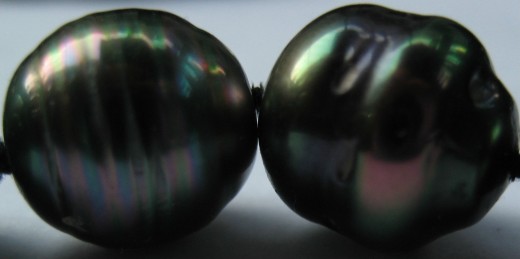
Silk Thread and Damage to Stringing Materials
Pearl necklaces are very often strung on silk, for the luxury feel of it and the perceived better drape it gives to a necklace.
The silk is usually knotted between each pearl. This has several benefits – the knot between two pearls stops the pearls rubbing against each other and damaging and dulling both pearls.
It's also a security feature – if the string breaks, the knots stop more than 1 or 2 pearls falling off, and disappearing in a rolling frenzy all over the place.
The knots further act as a type of hinge, instead of the pearls all being crowded together on the string, the knot between each one allows the necklace to drape much more elegantly.
Silk, however, can stretch if it gets wet or damp, and that won't make the necklace or bracelet look better.
So it's best to avoid it getting too wet, and if it does get wet, to lie it down until the silk is dry so that it doesn't stretch.
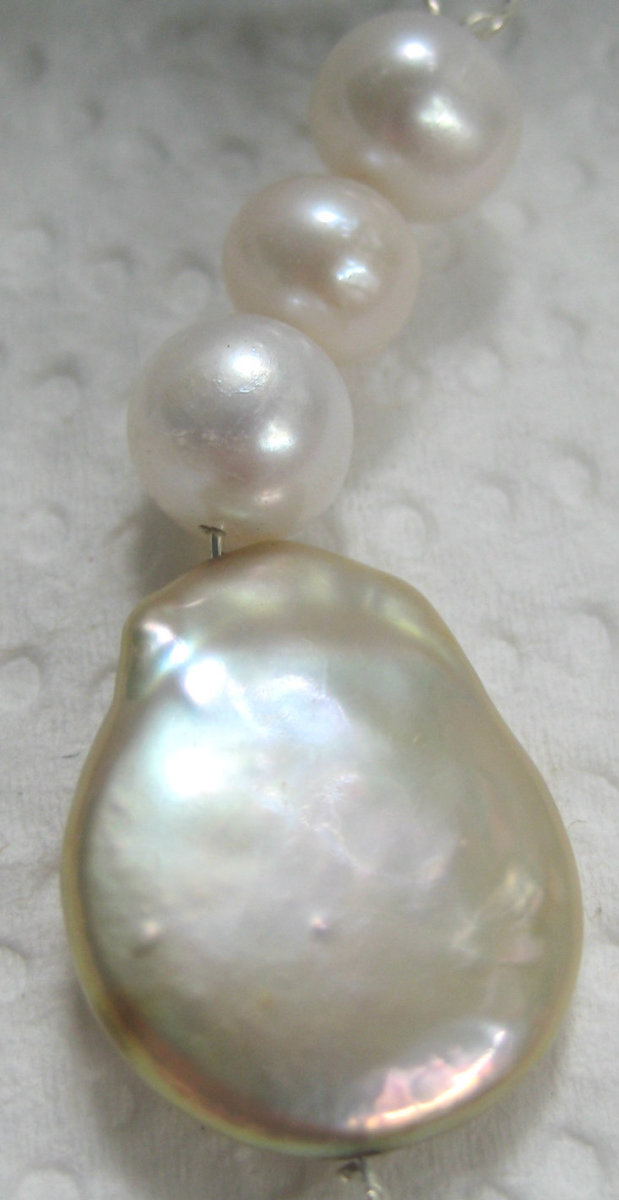
How to Avoid Damaging Your Pearls
A properly-strung necklace or bracelet, with knots between each pearl as above, helps prevent damage from the pearls rubbing together.
The first piece of advice is that pearls should be the last thing that you put on, and the first thing you take off.
So don't put a pearl necklace on, and then spray perfume on afterwards, thereby spraying the pearls with perfume and risking damage from that.
It's obviously sensible to avoid dropping pearls so that they land heavily, carrying them around unprotected in a handbag or pocket, or similar. Wrap them up safely so they don't bang into each other.
When you take your pearls off, it's a good idea to give them a wipe with a clean, soft cloth before you put them away. That removes any sweat or other liquids which have got on the pearls during the day.
It's not the end of the world, of course, if you don't do this, but it does help protect pearls over the long term.
It's also, generally, a bad idea to wear pearls when swimming, or doing energetic exercise – but you probably won't wear them then, anyway!
Cleaning Tarnished Silver on Pearl Jewellery
Ideally, it's better to avoid getting your silver tarnished in the first place – it's easier to do that than it is to clean it.
There are anti-tarnish bags, tabs and boxes you can buy to keep silver jewellery in and protect the silver from tarnish.
If you do have a tarnished silver clasp, or ring or bracelet with a pearl set in it, you need to clean it with care. Using liquid silver polish is a bad idea, it's very likely to damage your pearls.
The best thing to use is a silver-cleaning cloth. They are often impregnated with an agent to help remove tarnish, so it's also a good idea to keep the cloth away from the pearls.
The cloth, with a good application of elbow grease, will bring the silver up to a good shine, and avoids sloshing liquid polish around.
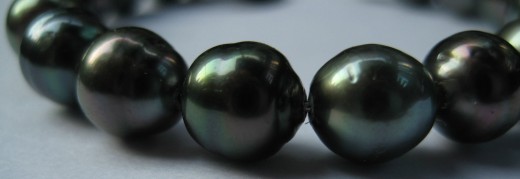
Cleaning Pearls
If the pearls themselves get dirty, the best way to clean them is with a damp cloth (gently), and then lay the jewellery out on a clean cloth to make sure it dries properly.
Water in reasonable quantities won't damage pearls, although it might not do associated metal or silk much good.




